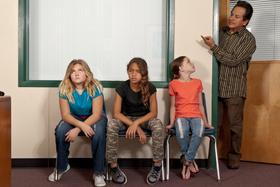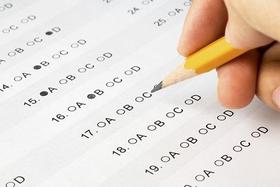Quick Stats (2025)
- School Type: Special education school
- Source: National Center for Education Statistics (NCES), IL Dept. of Education
School Overview
The teacher population of 5 teachers has grown by 66% over five school years.
School Type
Grades Offered
n/a
Total Students (19-20)
20 students
Total Classroom Teachers
5 teachers
School Rankings
Student : Teacher Ratio
n/a
13:1
American Indian
(19-20)5%
n/a
Asian
(19-20)5%
5%
Hispanic
(19-20)65%
26%
Black
(19-20)n/a
17%
White
(19-20)25%
48%
Hawaiian
(19-20)n/a
n/a
Two or more races
(19-20)n/a
4%
Eligible for Free Lunch (19-20)
25%
47%
Eligible for Reduced Lunch (13-14)
11%
3%
School Statewide Testing
School District Name
Source: National Center for Education Statistics (NCES), IL Dept. of Education
Profile last updated: 02/09/2025
Frequently Asked Questions
What schools are Transition Learning Center often compared to?
Transition Learning Centeris often viewed alongside schools like Transition by visitors of our site.
How many students attend Transition Learning Center?
20 students attend Transition Learning Center.
What is the racial composition of the student body?
65% of Transition Learning Center students are Hispanic, 25% of students are White, 5% of students are American Indian, and 5% of students are Asian.
What school district is Transition Learning Center part of?
Transition Learning Center is part of North Dupage Special Educational Cooperative School District.
School Reviews
Review Transition Learning Center. Reviews should be a few sentences in length. Please include any comments on:
- Quality of academic programs, teachers, and facilities
- Availability of music, art, sports and other extracurricular activities
Recent Articles

Segregation in K-12 Education: Colonial Era
Explore the origins of educational segregation during the colonial era and the differential treatment of Native American, African American, and white students. This article delves into the historical context, policies, and societal attitudes that shaped early education in colonial America, highlighting the disparities and injustices that persisted within the schooling systems of that time.

Students of Color Disproportionately Disciplined in Schools
Research shows that students of color face a disproportionate number of disciplinary actions in U.S. public schools. Learn about these disparities, as well as the policies that fuel them. Also learn about suggested measures to address this problem.

School-to-Prison Pipeline Persists Despite Local, State and National Efforts
Inadequate funding and resources for schools, harsh zero-tolerance discipline policies, police presence in public schools, and de facto segregation continue to create school environments in which poor and minority students have little chance of succeeding. The result is a continuation of the school-to-prison pipeline that has been commonplace in the American education system for decades, despite federal, state and local efforts to curb the problem.





